Today Fort Worth has many cemeteries, large and small. As the town has expanded over the years it has taken in many cemeteries—family, church, community—that originally were beyond the city limits. But one cemetery was the first. And if you think of cemeteries as outdoor history books, . . .
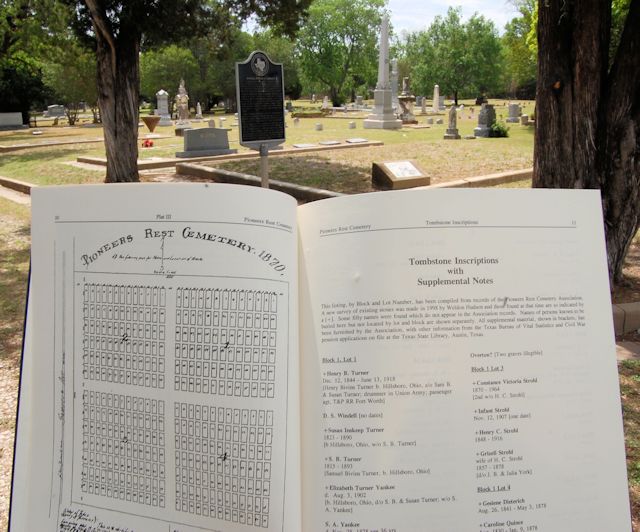 then Pioneers Rest Cemetery is volume 1 of Fort Worth’s outdoor history books, and each tombstone therein is a stone page in that history book.
then Pioneers Rest Cemetery is volume 1 of Fort Worth’s outdoor history books, and each tombstone therein is a stone page in that history book.
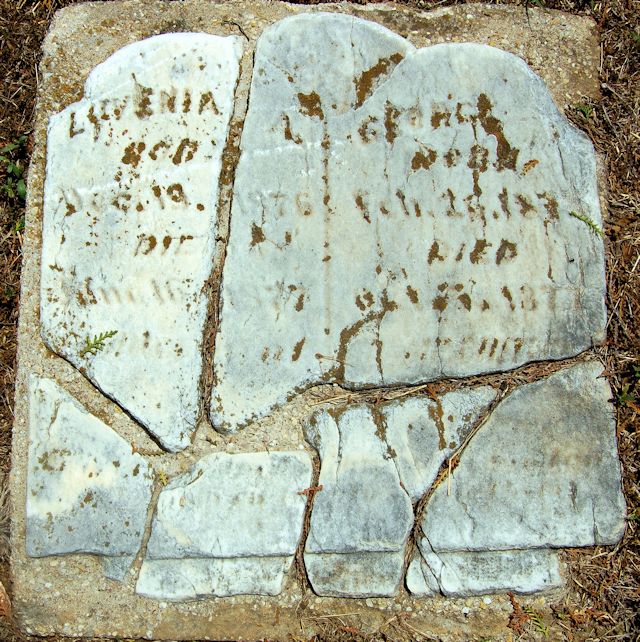 In fact, Pioneers Rest is so old that many of its pages are so weathered by time—especially those made of sandstone or limestone—as to be rendered unreadable. This page, for example, has been eroded by time and broken by vandals, then mended, set in a concrete “cast,” and laid on its back—a mosaic of mortality.
In fact, Pioneers Rest is so old that many of its pages are so weathered by time—especially those made of sandstone or limestone—as to be rendered unreadable. This page, for example, has been eroded by time and broken by vandals, then mended, set in a concrete “cast,” and laid on its back—a mosaic of mortality.
Fortunately, the Fort Worth Genealogical Society in 2001 published Pioneers Rest Cemetery as a guide to the people and the past of Fort Worth’s first cemetery.
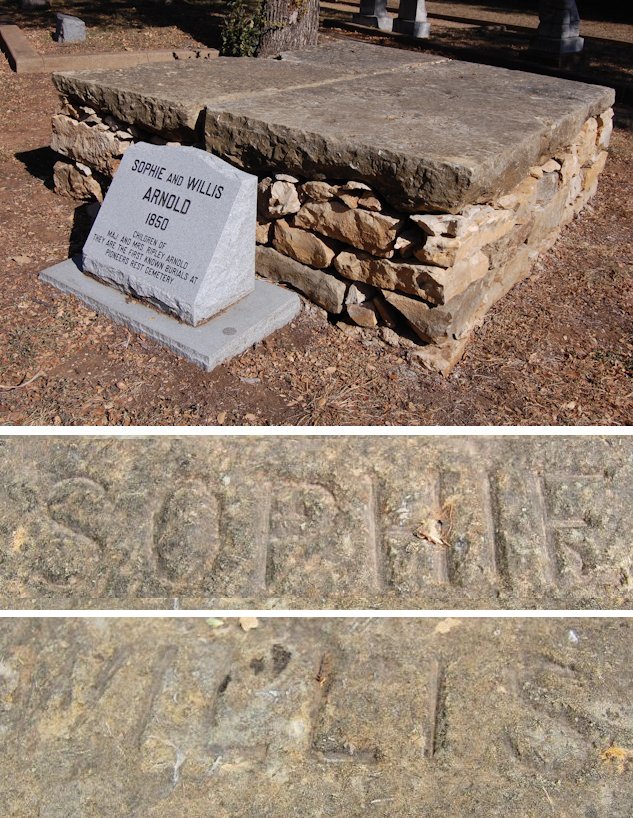 Any cemetery begins under sad circumstances, but Pioneers Rest began under doubly sad circumstances: In 1850 Sophie and Willis, children of Major Ripley Allen Arnold, commander of the Army’s Fort Worth, died of cholera (as had the fort’s namesake, General William Jenkins Worth, in May 1849).
Any cemetery begins under sad circumstances, but Pioneers Rest began under doubly sad circumstances: In 1850 Sophie and Willis, children of Major Ripley Allen Arnold, commander of the Army’s Fort Worth, died of cholera (as had the fort’s namesake, General William Jenkins Worth, in May 1849).
 The traditional story, told by historian Julia Kathryn Garrett and repeated on Pioneers Rest’s historical marker, is that Adolph Gounah, a friend of Major Arnold, donated the land on which to bury the two children in today’s Samuels Avenue neighborhood. Gounah also is said to have carved the stone slabs that cover the graves of the two Arnold children. The names “Sophie” and “Willis” can be seen carved on the slabs. Their father is buried nearby.
The traditional story, told by historian Julia Kathryn Garrett and repeated on Pioneers Rest’s historical marker, is that Adolph Gounah, a friend of Major Arnold, donated the land on which to bury the two children in today’s Samuels Avenue neighborhood. Gounah also is said to have carved the stone slabs that cover the graves of the two Arnold children. The names “Sophie” and “Willis” can be seen carved on the slabs. Their father is buried nearby.
Regarding ownership of the land, the Fort Worth Genealogical Society says that possibly no one had clear title to the land the cemetery was on—which was Peters Colony land—at the time the children were buried. If anyone owned the land, that person was Middleton Tate Johnson, who owned one of the two surveys the cemetery was located on.
Either way, in 1850 Fort Worth’s first cemetery was well beyond the city limits. Heck, there were no city limits. Fort Worth would not incorporate for another twenty-three years.
But in 1870 a cemetery association was formed. Among trustees were Martin Bottom Loyd, Khleber Miller Van Zandt, and William Paxton Burts.
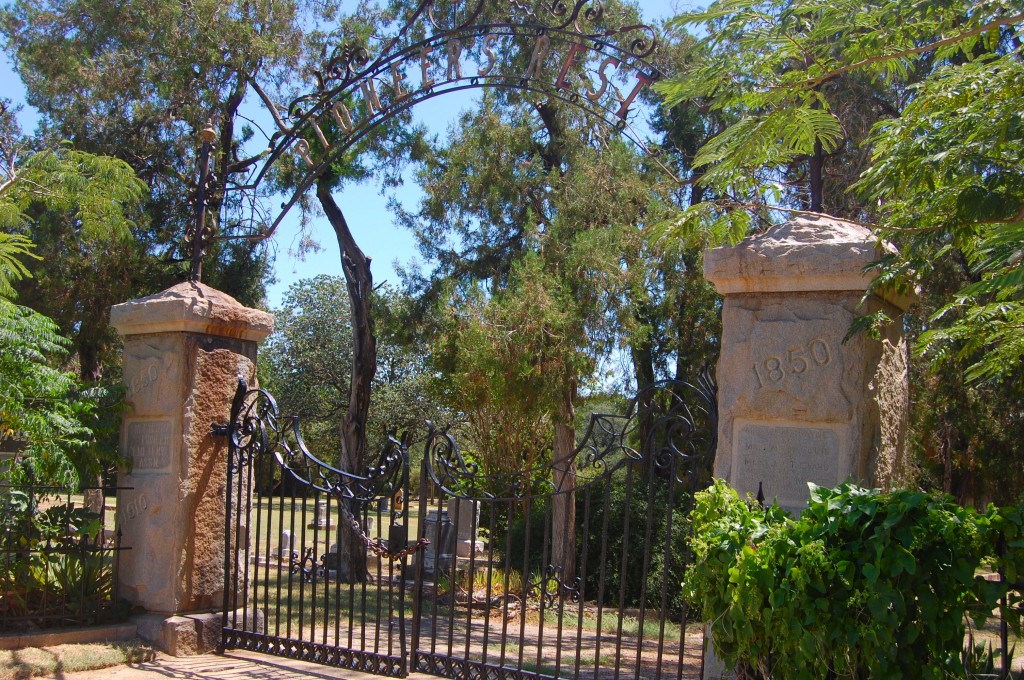 The cemetery’s stone entrance and iron fence were erected in the 1870s.
The cemetery’s stone entrance and iron fence were erected in the 1870s.
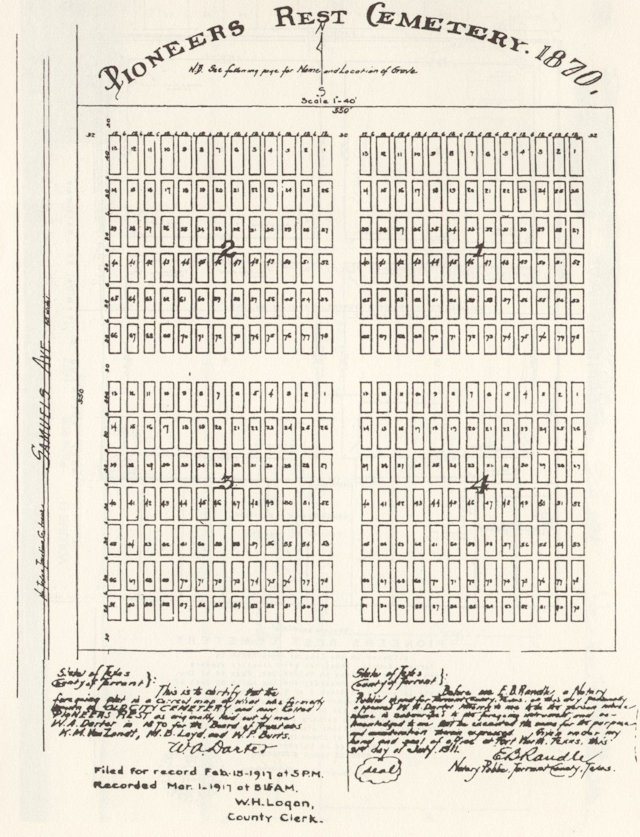 This is the layout of the cemetery as platted in 1870. (From Pete Charlton’s “1000+ Lost Antique Maps of Texas & the Southwest on DVD-ROM.”)
This is the layout of the cemetery as platted in 1870. (From Pete Charlton’s “1000+ Lost Antique Maps of Texas & the Southwest on DVD-ROM.”)
About 1871, the genealogical society wrote, Gounah bought the land containing the cemetery from Johnson’s estate. (Gounah died soon after.) Also about that time pioneer settler Baldwin L. Samuel donated three acres to enlarge the cemetery to six acres.
Gounah’s widow said her husband had protested the city using his cemetery as its own. She said she herself sold burial plots to only two families: the Daggetts and Hirschfields.
 In fact, the city did not own the land containing what was called “city cemetery,” and ownership was disputed. In 1878 a Fort Worth Democrat story read: “It may not be generally known that what is called the city cemetery is not owned by the city.” The Democrat suggested the city buy the cemetery but pointed out that the cemetery was almost full and suggested the city buy adjoining property to enlarge it.
In fact, the city did not own the land containing what was called “city cemetery,” and ownership was disputed. In 1878 a Fort Worth Democrat story read: “It may not be generally known that what is called the city cemetery is not owned by the city.” The Democrat suggested the city buy the cemetery but pointed out that the cemetery was almost full and suggested the city buy adjoining property to enlarge it.
Instead the next year Fort Worth opened volume 2 of its outdoor history books—Oakwood Cemetery—when John Peter Smith donated some of his farmland north of the river for a new cemetery. Afterward Pioneers Rest became known as the “old cemetery” or the “Samuels Avenue cemetery.”
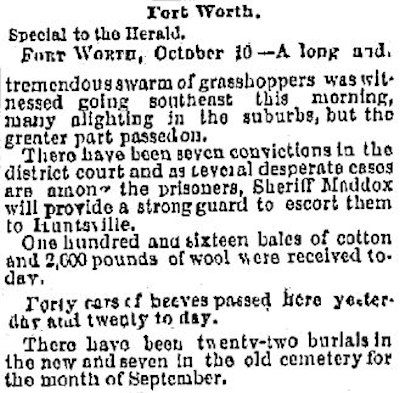 On October 12, 1882 the Dallas Weekly Herald published this summary of Fort Worth news: an infestation of grasshoppers, convictions in district court, bales of cotton and wool received, cars of beeves passed, and burials in the “new cemetery” and the “old cemetery.” Even the name “Oakwood” did not catch on right away.
On October 12, 1882 the Dallas Weekly Herald published this summary of Fort Worth news: an infestation of grasshoppers, convictions in district court, bales of cotton and wool received, cars of beeves passed, and burials in the “new cemetery” and the “old cemetery.” Even the name “Oakwood” did not catch on right away.
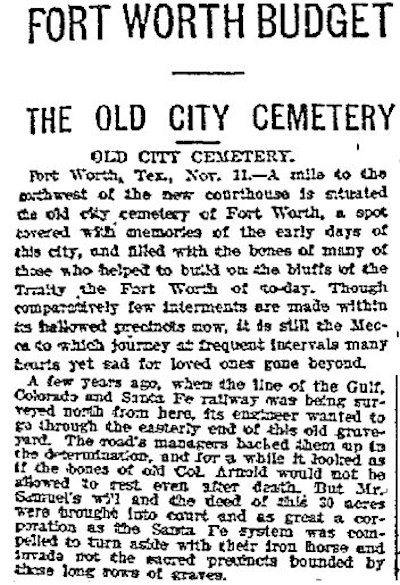 Fort Worth’s first cemetery has faced some challenges. In 1895 the Dallas Morning News reported that “a few years ago” the Santa Fe railroad wanted to lay track across the part of the cemetery that contains the graves of Major Ripley Arnold and his two children. But a court ruled, “Let them rest in peace.” Clip is from November 12.
Fort Worth’s first cemetery has faced some challenges. In 1895 the Dallas Morning News reported that “a few years ago” the Santa Fe railroad wanted to lay track across the part of the cemetery that contains the graves of Major Ripley Arnold and his two children. But a court ruled, “Let them rest in peace.” Clip is from November 12.
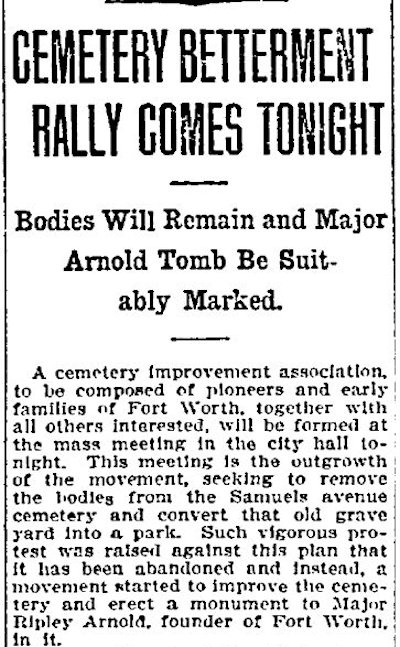 And in 1909 there was a campaign to convert the “old cemetery” to a park. But that campaign was quashed, and a movement was started to erect a monument to Major Arnold. Clip is from the November 18, 1909 Star-Telegram.
And in 1909 there was a campaign to convert the “old cemetery” to a park. But that campaign was quashed, and a movement was started to erect a monument to Major Arnold. Clip is from the November 18, 1909 Star-Telegram.
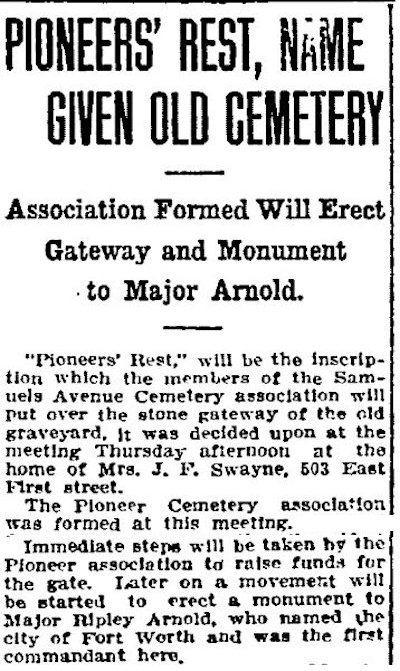 Also in 1909, on December 2, the “old cemetery” finally got a proper name: “Pioneers Rest.” A new cemetery association was formed, and again plans to erect a monument to Major Arnold were reported. Clip is from the December 3, 1909 Star-Telegram.
Also in 1909, on December 2, the “old cemetery” finally got a proper name: “Pioneers Rest.” A new cemetery association was formed, and again plans to erect a monument to Major Arnold were reported. Clip is from the December 3, 1909 Star-Telegram.
But Major Arnold is not the only soldier buried in Pioneers Rest:
Volume 1 of Fort Worth’s Outdoor History Books (Part 2): Soldiers
(Pioneers Rest Cemetery Association seeks volunteers to support Fort Worth’s oldest cemetery. Contact Melanie Smith at (817) 332-8515 or [email protected]. Pioneers Rest Cemetery Association has a Facebook page.)
(2 p.m. Friday, November 11: The association will mark Remembrance Day by paying tribute to veterans of every war from the War of 1812 to World War II.)






Wonderful information! I’ve long meant to explore Pioneers Rest Cemetery… and this is a powerful incentive to get over there and do it. Thank you, Mike, for yet another excellent post!
Thanks, Kris. If you have never been to the Samuels Avenue area, look at a map to see how to get there. For a place so centrally located, it’s not easily accessible because of the river, railroads, one-way streets, etc.